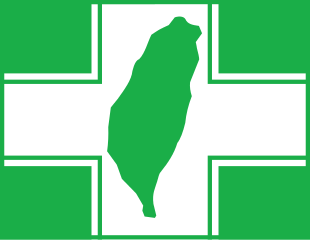Photo: Lennon Ying-Dah Wong, CC BY-NC-ND 2.0
Introduction
Sunflower Movement, March 2014 01:00
- Sunflower Movement: young people occupied the parliament for 23 days, in opposition to a trade deal
- first Taiwanese presidential elections in 1996
- Democratic Progressive Party, DPP
- Kuomintang, KMT
- Chen Shui-bian, former president, corruption charges
- huge issue: unification vs. independence
- ~10% of Taiwanese population migrated directly over from the mainland
2016 elections, Taiwan under Tsai Ing-wen 06:53
- Tsai Ing-wen, elected president in 2016
- judicial reform, removing „dinosaur judges“
- KMT assets, might be richest party in the world
- wanted to lessen Taiwan’s economic dependence on China
- New Southbound Policy
- low wages: 22,000 New Taiwanese Dollars as a college graduate = 607.54€ or $753.72
- high housing prices in Taiwan
- Lots of Taiwanese going to China to work there for better wages
- weak „strawberry generation„
- low birth rate, ageing population (demographic structure as of 2016)
What did the Sunflower Movement do? 12:04
- election of Tsai Ying-wen in 2016
- political independent Ko Wen-je became Taipei mayor
Current Politics of the Taiwanese Left 14:20
- New Power Party (NPP; Chinese: 時代力量), post sunflower movement party
- Legislature: proportional representation
- New Party: extreme unification
- fights and brawls in the legislature
- Largest party: social democratic party, quite new
- Alliance with the older green party
- Taiwan Independence Party: mostly independence
- NPP: more moderate, somewhere in between
Cooperation with the DPP in Parliament 20:00
- Marriage equality
- DPP: Christian element, Presbyterian church in Taiwan
- NPP leader under fire from anti gay activists, faced recall vote (Huang)
- supreme court ultimately ruled for marriage equality (although conservative)
- two-year deadline
- Ma Ying-jeou, former president
New Labor Law 23:30
- Labour reforms in 2016
- NPP sided with labour unions, accused of instigating anti-DPP protests
- The Liberty Times, Pan-green newspaper
- labour unions: oppressed during martial law period (1949 to 1987)
- Labour unions have both pro and anti-independence forces, some entered KMT as officials
- cutting restrictions on mandatory rest time for workers
- less overtime pay
- vacation days can be delayed indefinitely
- overwork-related deaths
- mandatory time-off between shifts reduced
- economic competitiveness
- decline in manufacturing jobs, service sector prominent
- Taiwan has 4th longest working hours in the world
Foxconn 38:40
- Foxconn’s share of Taiwan’s GDP is 22%, comparable to Samsung in South Korea
- Suicides at Foxconn factories
- Foxconn CEO Terry Gou as a political actor
- Pan-blue camp: the „right“ wing in Taiwanese politics
Protests 44:49
- large protest in Kaohsiung, a industrial city in southern Taiwan
- protests in Taipei, police violence
- little coverage on the labor protests
- issue of press ownership: Mainland Chinese companies buying up Taiwanese media
- „powerpoint protest signs“
- one especially popular and widely used comic strip on the labour law
- other organizations producing infographics to explain the law (and others):
沃草 Watchout, 圖文不符 (simpleinfo)
- upcoming local elections in late 2018


Schreibe einen Kommentar